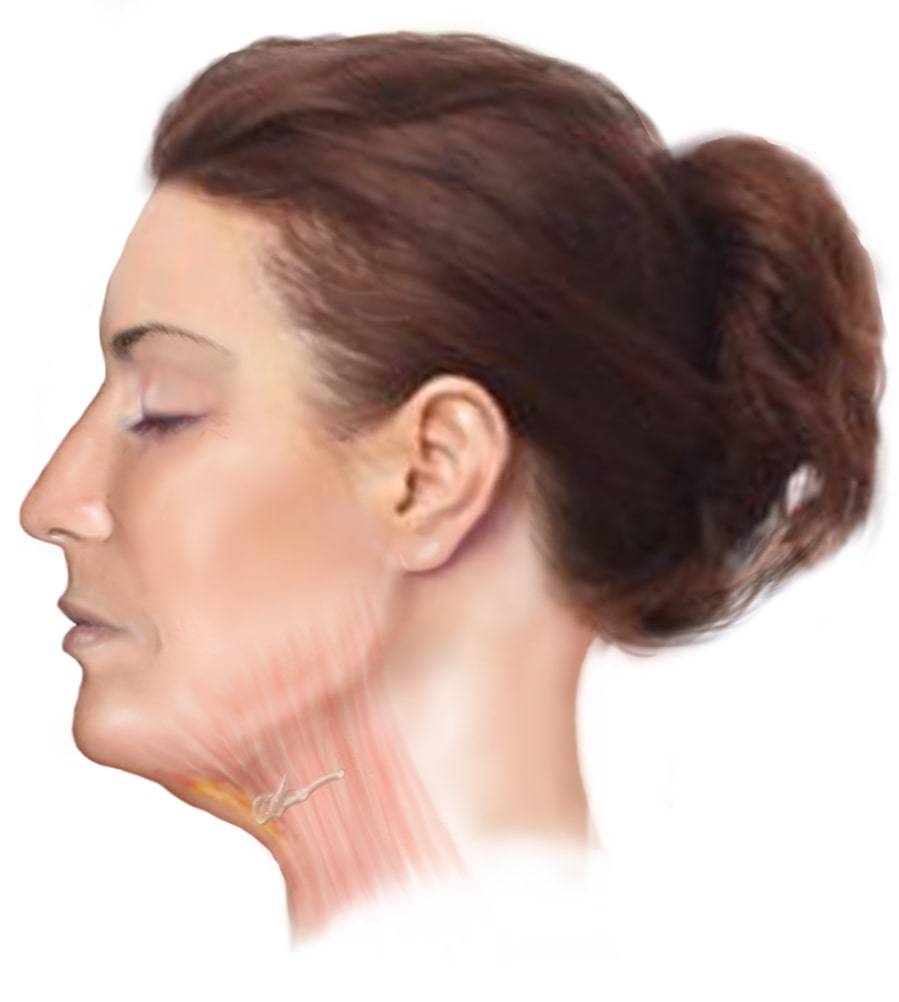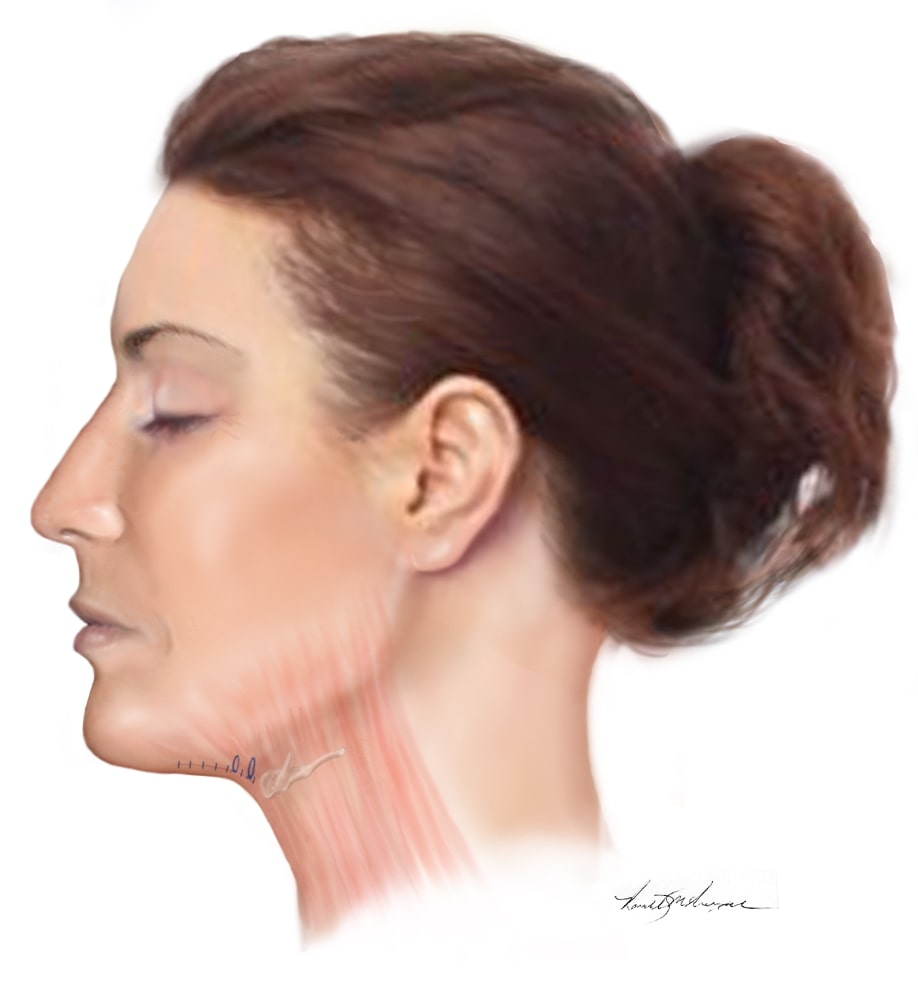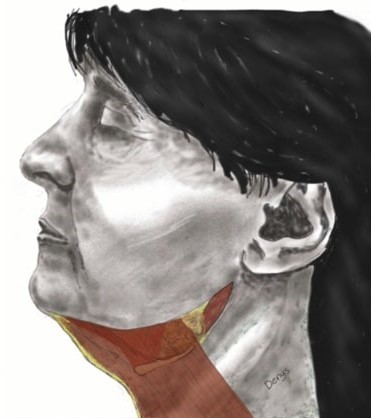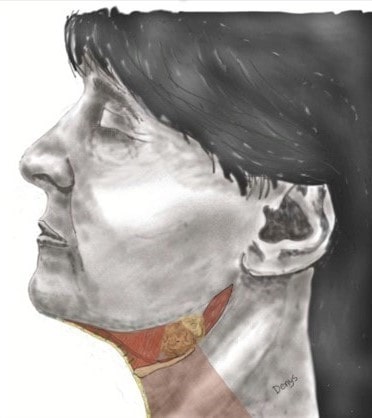Deep Plane and SMMS Facelift in Memphis, TN, with Dr. Langsdon

Facelift surgery can work wonders in restoring a younger, brighter appearance as you age. By lifting and repositioning underlying tissues, today’s facelift techniques enable beautifully natural-looking results.
Dr. Langsdon provides all types of facelift procedures; the type selected depends upon what each patient may need. Dr. Langsdon is one of the best deep plane facelift surgeons in the world. Additionally, he has invented and published new techniques that have dramatically improved the deep plane technique. One of these innovations in facelift surgery, the SMMS (submental muscular medialization and suspension) approach, improves sagging tissue below the chin and on the neck to sharpen the angle between the horizontal line of the chin and the vertical line of the neck.
A well-defined angle between the chin and neck (the cervical angle) is noticed by most people as a sign of youth and vitality. A less-defined angle, with hanging skin and fatty deposits below the chin and on the neck, may be seen as a sign of aging.
If you have a poorly defined chin-to-neck angle, perhaps in the form of a double chin or the drooping skin of “turkey neck,” an SMMS facelift might be the solution for you.
If you think you might benefit from a deep plane facelift or an SMMS facelift, Dr. Phillip Langsdon is the premier surgeon to consult. Dr. Langsdon developed and has led the refinement of the SMMS technique over many years. He was the first to publish his technique in 2012, then again in 2013, and once more with statistical results in 2019. Many other leading facelift surgeons have adopted the method throughout the world. Dr. Langsdon served as president of the American Academy of Facial Plastic and Reconstructive Surgery (AAFPRS) in 2018-19 and is considered by many to be the best facelift surgeon in America.
Read more about Dr. Langsdon’s recognition as a premier facelift surgeon.
To learn more about how an SMMS facelift in Memphis might benefit you, contact The Langsdon Clinic today to schedule a consultation with Dr. Langsdon.
What Is a Deep Plane Facelift?
A deep plane facelift is a facelift that lifts the underlying muscle, rather than relying on simply pulling the skin. The deep layer is raised and lifted upward and backward in a natural direction. This is a strong lift and creates a natural look maintaining continuity from the cheeks, through the jowls, down into the neck. It has the potential to improve the mid upper cheek much better than simpler lifts or lifts that depend on stretching the skin. By using the deep plane technique, it helps avoid the skin pull or wind-swept look that often occurs when simply pulling on the skin.
The deep plane facelift can also improve the neck, but in certain conditions such as a full neck with little or no angle beneath the chin, more may be needed. The SMMS technique developed by Dr. Langsdon has the best chance to sharpen the chin-to-neck angle by removing fat from below the muscles of the neck and chin, and then lifting, tightening, and securing the underlying muscles of the upper neck. The focus of this muscular repair is at the center front of the upper neck, where it meets the centerline of the tissue below the chin.


Other facial improvements may also be made in an SMMS facelift, depending on your anatomy and your goals for the procedure. These might include giving better definition to the jawline by correcting sagging jowls.
How Is a Deep Plane Facelift Done?
In a deep plane technique, incisions are made close to the creases in front of the ear and then behind the ear. A small incision is placed under the chin to access the underlying muscles and supportive tissue of the neck, chin, and lower face.
Then the skin is elevated slightly so that Dr. Langsdon can go underneath and lift the muscle layer. Once the tissues are lifted they are repositioned up and then slightly backward, to counteract and match the natural descent that occurs with aging. The muscles are then secured with strong sutures that do not have to be removed. Once this is done there will be excess skin that is removed without causing any stretching. The repair is completed with absorbable sutures in front and behind the ear and under the chin. Small surgical clips may be used around the hair so that, other than trimming hair fuz at the bottom of the incisions, the hair does not need to be shaved.
Often, to gain the best improvement, the neck must also be addressed. Through the small incision under the chin, fat may be removed if indicated and the muscles are tightened. However, in obtuse, thick or fatty necks or in conditions when inherited neck anatomy precludes a better neckline, the SMMS may help.
Meet Dr. Langsdon
President of the American Academy of Facial Plastic and Reconstructive Surgery, 2018
Phillip R. Langsdon, M.D. is Clinical Professor, Department of Otolaryngology-Head & Neck Surgery, University of Tennessee Health Science Center, Memphis. Dr. Langsdon’s career has been limited and focused entirely on Facial Plastic Surgery and he has dedicated himself to the pursuit of excellence in his field.
How Is an SMMS Facelift Done?
In an SMMS facelift, incisions are made to access the underlying muscles and supportive tissue of the neck, chin, and lower face. The key incision for the SMMS portion of the procedure is made in a crease below the chin. Through this incision, excess fat is removed from the neck and under the chin. This might be done surgically, with liposuction, or using a combination of both approaches. The significant innovation of SMMS surgery lies in the way the muscles of the upper neck are lifted and reattached after submuscular fat has been removed.
The platysma muscle is the broad, flat muscle that covers the front of the neck. When excess fat is removed from beneath the platysma, a gap can be left between it and the next deeper layer of muscles din the neck. In an SMMS facelift, the platysma is repositioned and pulled in at the top and center of the neck by attaching it to two underlying muscles — the digastric and mylohyoid muscles — using a special suture technique. This secures the tissue in a way that creates a well-defined chin-to-neck angle.
When the upper deep plane facelift is done, other incisions may also be made along the hairline above and below the ears and around the crease of the earlobe to lift and reposition tissue in the lower part of the cheeks and the jawline.
If a weak chin is contributing to the appearance of a poorly defined chin-to-neck angle, an SMMS facelift may be combined with chin augmentation.
How Is a Deep Plane Facelift Different from Other Procedures?
A deep plane facelift lifts the deeper muscle layer in continuity with the overlying skin, rather than simply pulling on the muscle layer a short distance or relying on pulling the skin. Pulling the skin can cause a stretched look. Pulling on the muscle layer SMAS a short distance, rather than lifting and repositioning the deep plane, may not be as effective. Additionally, the deep plane lift provides continuity from the cheeks, jowls, down to the neck.
How is the SMMS Different from Other Procedures?
This procedure can often help in patients that do not naturally have a sharp neck angle. An SMMS helps improve definition in the chin-to-neck angle in a way that other facelift techniques may not accomplish. By eliminating excess fat under the deep muscle layer and pulling in the muscles up where the upper neck meets the tissue below the chin, the SMMS facelift enhances the other improvements made in a facelift. The technique enables this enhanced profile in conditions when other techniques may not.
Why Might I Consider a Deep Plane Facelift?
When there is sagging of the cheeks, jowls and neck, a deep plane facelift may help. A deep plane facelift helps lift the face more vertically, in a more natural direction, and helps restore some fullness to the mid face and creates a lift in continuity with the midface, cheek, jowls and neck. This creates a natural lift, avoiding the stretched skin pull type appearance seen in some other procedures. Dr. Langsdon wants to create a youthful, natural looking result.
Why Might I Consider a SMMS Lift?
You might consider an SMMS facelift if you are bothered by a full neck without a naturally sharp angle between the neck and chin when looking at your side profile.
When viewed in profile, this combination of sagging and bulging tissue works to lower the line from the chin to where the under-chin skin meets the neck. Instead of having a horizontal line under the chin that meets the vertical line of the neck at a well-defined angle, an obtuse neck may have a sloping line under the chin that connects with the neck at a weak angle.
An SMMS facelift can help move the tissues toward a more horizontal line under your chin and help improve the angle at the chin-neck intersection.


Why Choose Dr. Langsdon as My Deep Plane and SMMS Facelift Surgeon?
Dr. Langsdon is a pioneer in facelift surgery and is considered by many to be one of the best facelift surgeons in America. He developed and has led the refinement of the SMMS technique over many years. Through his work with the American Academy of Facial Plastic and Reconstructive Surgery, which he led as president in 2018-19, he has organized and overseen the organization’s medical education program. He has published his innovations in surgical technique, taught young doctors specializing in facial plastic surgery, and led special facelift training programs for experienced surgeons.
Dr. Langsdon’s expertise and innovations are all focused on one overriding goal: to produce beautiful natural-looking results for his patients. Dr. Langsdon is a compassionate surgeon who has the highest level of talent, experience, ability, expertise, and commitment to his patients, and he is one of the best facelift surgeons in the world. Dr. Langsdon has the experience and specialization to create outstanding results. People from throughout the U.S., and abroad travel to Dr. Langsdon’s practice because of his unmatched expertise.
What Can I Expect in My Facelift and SMMS Facelift Procedure?
Your facelift and SMMS neck procedure will be performed in The Langsdon Clinic’s ambulatory surgical center. In preparation for surgery, you will be given medication to help you relax, promote healing, and minimize post-operative swelling and bruising. For most patients, deep twilight sedation is used and supplemented by local anesthesia.
A facelift is a highly individualized procedure. The exact approach that Dr. Langsdon uses for your surgery will depend on your anatomy and your goals, as determined in your consultation.
Once you are alert again after your sedation and anesthesia, a trusted friend or family member can drive you home or a nearby hotel.
What Can I Expect in Recovery?
We will provide you with a post-operative recovery plan customized to the unique aspects of your facelift procedure. You can expect some swelling and bruising. Most patients say they have minimal discomfort. In any event, Dr. Langsdon will prescribe medication to help you remain as comfortable as possible.
You will need to rest for the first week after surgery and avoid strenuous activity for the first two weeks. To promote healing and minimize swelling, you will need to keep your head elevated for the first two weeks of your recovery. You can sleep on an incline pillow, in a reclining chair, or propped up by multiple pillows.
After two weeks of recovery, most patients can resume social activities, although complete healing from any surgery can take a year. Most patients are able to go back to office work or school two weeks after their SMMS facelift. If your job tends to be strenuous, you may need a little more time to ensure that healing is well underway.
Schedule Your Memphis Deep Plane Facelift and SMMS Necklift Consultation Today
Contact The Langsdon Clinic today to schedule a consultation with Dr. Langsdon. For more than 25 years, Dr. Langsdon has operated the only practice in the Mid-South whose focus is limited to and specialized in cosmetic surgery of the face, nose, eyes, head, and neck. Patients travel from throughout the Mid-South and all over the U.S. to visit Dr. Langsdon due to his widely recognized reputation as one of America’s best facelift and rhinoplasty surgeons.
For more information on your facial plastic surgery in or around the Memphis, TN area, please contact us by calling 888-816-FACE (3223) or 901-755-6465, or by sending us a message on our website. Dr. Langsdon and his team look forward to helping you discover the excellent results possible through facial rejuvenation!
